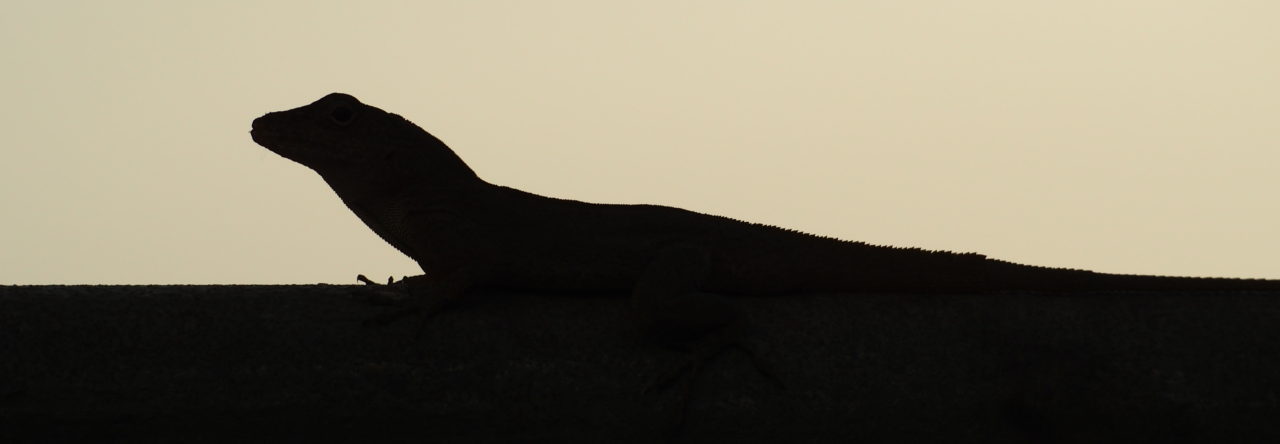I spent a few weeks on Cuba in February-March, and photographed a bunch of different anoles, but I have no way of identifying them. I put all photos on one page with very tentative captions. I’ll appreciate any comments/corrections.
Here are some of the uncertain ones:
1.
2.
3.
4.
5.
6.
7.
8.
9.
10.
11.
Latest posts by Vladimir Dinets (see all)
- Help Identify More Cuban Anoles - January 16, 2020
- Help Identify Anoles of Cuba - December 22, 2019
- Anolis Photos from Cuba: ID Help Needed - July 2, 2016



Shea Lambert
#1 and #7 both look like A. lucius to me.
Vladimir Dinets
I thought #1 was A. lucius. But #7 was in a forest with no cliffs or rocks within a few hundred meters, so I guessed it was A. pumilus.
Levi Gray
So 3 is some kind of trunk anole (judging by the spines on it’s side)? I’d like to know what species it is because it looks amazing.
I’m in the field, otherwise I’d be digging into it right now.
Ludovic D.
For me:
1 & 7 – A.lucius
4 – A.argenteolus
5 & 8 & 9 – A.sagrei
6 & 11- A.porcatus
Vladimir Dinets
Thanks!
Joe Burgess
Would need location data for some to get correct ID ssp, but here is what I can say definitively…
1. bartschi
2. alutaceus
3. loysiana
4. argenteolus
5. homolechis (young) ?
6. porcatus
7. lucius
8. homolechis (young or female)
9. jubar female
10. jubar
11. porcatus
Vladimir Dinets
Thanks!
2,4,8,9,10 are from Alejandro Humboldt NP. 1,3,7,11 are from Finca la Belen in central-eastern Cuba. 5 is from Granma NP, 6 is from Zapata Swamp (note: I have to do this from memory as I am traveling, so I might be wrong. I’ll be able to check my records in mid-August. Sorry about this.)
Axel Flaeschendraeger
Hello Vladimir,
thank you for the nice pictures. To identify anoles just from pictures is always a bit tricky. It is always helpfull if you know the location, because a lot of species are similar to each other. I tried to define them:
1. A. lucius, male
2. A. inexpectatus, male
3. A. loysiana, female
4. A. argenteolus
5. A.-homolechis-group
6. A. porcatus
7. A. lucius
8. A. homolechis???
9. A. rubribarbus, female
10. A. homolechis, male
11. A. allisoni
I hope I could help.
Greetings from Germany,
Axel
Vladimir Dinets
Thanks!